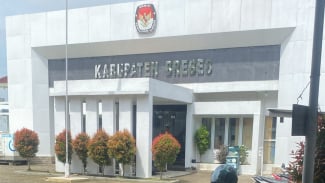Oldest Medical Amputation Found in Borneo, from 31,000 Years Ago
- Jose Garcia
VIVA – Archaeologists have uncovered the remains of a young hunter in Borneo who survived the amputation of the lower left leg around 31,000 years ago. Archaeologists have concluded that this ancient operation was the earliest recorded medical amputation.
The skill of the Stone Age surgeon was astonishing because the patient was able to continue to live six to nine years after surgery.
"It is a great surprise that these ancient explorers survived a very serious and life-threatening childhood operation. The wounds healed and formed a stump. Then, they lived for years in mountainous areas with altered mobility," A Study Author, Melandri Vlok remarked.
An international team of archaeologists discovered the skeletal remains of a young man inside a limestone cave known as Liang Tebo during an archaeological excavation in 2020.
Sisa-sisa kerangka dengan kaki diamputasi
- Tim Maloney
As quoted from the Live Science site on Thursday, September 8, 2022, researchers say the cave is remote and can only be accessed by boat at certain times of the year.
They found the skeleton of the lower leg, including the leg, removed by intentional surgical amputation and the presence of bone growth associated with healing, suggesting that the limb was surgically amputated not as a result of an animal attack or other tragic accident.
According to a 2007 study published in the journal Nature Precedings, archaeologists have yet to find out why the boy's leg had to be amputated. Before the discovery, the earliest evidence of amputation in humans involved the 7,000-year-old skeleton of an old Stone Age farmer, whose left arm had been surgically removed.
At that time, humans were considered to have no knowledge and the lack of tools needed to successfully perform complex operations, which often involved navigating a network of blood vessels, nerves, and muscles.
But the new findings reveal that humans possess detailed knowledge of limb anatomy and the muscular and vascular systems to expose and negotiate veins, and nerves and prevent fatal blood loss and infection.
"New findings in Borneo suggest that humans already could successfully amputate diseased or damaged limbs long before we started farming and living in permanent settlements," A Study Author, Maxime Aubert remarked.
But they continued it was too early to say that the operation in Borneo was an isolated example of amputation or that surgeons were performing similar contemporary procedures there, in Asia, or even around the world.



























